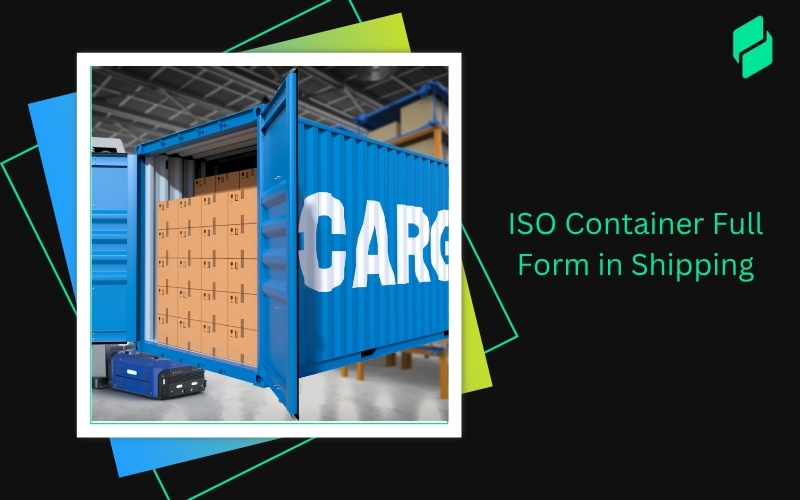Have you ever thought about how shipping insurance can protect your valuable items from unforeseen events? In our fast-moving world, This is your shield against the unexpected.
As we move into 2024, it's vital to understand the details of this insurance and coverage. It's not just about safeguarding your products; it's about giving you peace of mind.
In this article, we'll explore the key aspects of this insurance, making sure you have the information you need to navigate the constantly changing landscape of international trade.
Optimize your business: use unlimited savings with Pazago fulfilled now!
Get Started ->Definition and Purpose of Shipping Insurance
In simple terms, this insurance, also known as marine insurance, is a protective measure that secures products during shipment.
It covers goods against various unfortunate events such as theft, damage, or mishandling. The insurance provider assumes financial responsibility for the goods until they reach their designated destination.
The primary purpose of this insurance is to provide peace of mind and financial security, ensuring that you are compensated if your shipment doesn't reach its destination in the same condition it was sent.
Importance in the E-commerce Space
Shipping involves multiple stages and processes, making it essential to have a safety net in case something goes wrong. If goods get damaged, the seller will have to forgo revenue and focus on refunding the amount or sending another set.
- E-commerce Growth: With the rise of online shopping, more goods are being shipped worldwide.
- Increased Risks: This increase in shipping volume leads to a higher potential for mishaps, making this insurance crucial for risk protection.
Coverage Details
- Loss, Damage, or Theft: Policies can be tailored to cover various scenarios, including loss, damage, or theft of goods.
- Policy Tailoring: Understanding the specifics of your policy, such as covered risks, insured value, and exclusions, is key to ensuring comprehensive coverage.
Now that we've dipped our toes into the basics, let's dive deeper into the types of this insurance and what they mean for your business.
Types of Shipping Insurance
For businesses looking beyond traditional insurance solutions, Pazago offers a unique blend of logistics and financial services, enabling more comprehensive risk management strategies.
Also Read: Inland Marine And Ocean Marine Insurance Comparison: Coverage, Benefits, Difference
Benefits of This Insurance
1. Total Protection
This insurance ensures that the entire value of your shipments is covered, giving you peace of mind that your goods are secure.
2. Rapid Reimbursement and Reshipment
Customers expect quick resolutions to issues. With this insurance, you can swiftly reship replacement goods or offer refunds or credits to your customers, reducing the financial risk to your company.
3. Confidence in Shipping
With this insurance, you can ship with confidence, knowing that your items are protected up to their full retail value. This assurance benefits both your business and your customers.
4. Safeguarding Revenue and Reputation
Unresolved issues with stolen or damaged packages can deter customers from shopping with a retailer again. By enhancing the shipping experience, businesses can recover potential lost sales and protect their reputation.
We've learned about the types of this insurance and how they protect your shipments. Now, let's talk numbers and see how the costs stack up.
Cost Analysis of Shipping Insurance
Cost Variability by Provider and Coverage Level
- Provider Differences: The cost of this insurance varies significantly among providers. It's essential to compare quotes and understand the coverage offered.
- Coverage Levels: Higher levels of coverage typically result in higher premiums. Consider the value of your shipments and choose a coverage level that matches your risk tolerance.
Comparing the Costs and Benefits for Businesses
- Cost-Benefit Analysis: Evaluate the cost of insurance premiums against the potential financial loss from uninsured shipments.
- Business Impact: Consider how this insurance can protect your bottom line and reputation. The benefits often outweigh the costs, especially for high-value or fragile shipments.
Understanding the costs involved in this insurance is crucial. Equally, utilizing a platform like Pazago can help optimize these costs by providing tools for efficient trade management and cost-effective shipping solutions.
Alright, we've covered a lot of ground but stick with me. We're about to tackle one of the most critical pieces of the puzzle - how to file a claim if things don't go as planned.
Also Read: Top 5 Marine Insurance Policy Providers In India
Filing a Shipping Insurance Claim
Steps to File a Claim with Major Carriers
- Notification: Notify the carrier or insurance provider immediately after noticing damage or loss.
- Claim Form: Complete the claim form provided by the carrier, including details of the shipment and the nature of the claim.
- Submission: Submit the claim form along with any required documentation to the carrier within their specified timeframe.
Documentation and Proof Required for Claims
- Proof of Value: Provide invoices or receipts to establish the value of the shipped items.
- Damage Evidence: Include photos or inspection reports that demonstrate the extent of the damage.
- Shipping Records: Retain shipping labels, tracking numbers, and any correspondence with the carrier as evidence.
Understanding the Processing Times for Claims
- Varies by Carrier: Processing times can vary depending on the carrier and the complexity of the claim.
- Typical Duration: Claims are often processed within a few weeks, but it's essential to check with your specific carrier for their average processing time.
- Follow-Up: Stay in contact with the carrier or insurance provider to monitor the progress of your claim and provide any additional information requested.
Feeling overwhelmed? Don't worry, we're about to break down the coverage and limitations of this insurance, making it easier to grasp what's at stake.
Also Read: Insurance Claim Letter for Requesting Reimbursement Process
Coverage and Limitations of Shipping Insurance
Scope of Coverage
- What's Covered: This insurance typically covers loss, damage, and theft of shipments. Some policies may also cover certain types of delays.
- Understanding Coverage: It's important to understand the specifics of your coverage, including any caps on reimbursement and conditions under which coverage applies.
Exclusions and Limitations Based on the Carrier and Policy
- Carrier-Specific Exclusions: Each carrier may have its own set of exclusions and limitations. For example, some may not cover certain types of goods or specific causes of loss.
- Policy Limitations: Policies often have limitations, such as deductibles or maximum coverage amounts. Review your policy carefully to understand these limitations.
Key Differences Between Declared Value and Full Insurance Coverage
- Declared Value: This is a carrier-provided option where you declare the value of your shipment. Coverage is limited to the declared amount, and compensation may be less than the full value of the lost or damaged items.
- Full Insurance Coverage: This provides more comprehensive protection, covering the full value of your shipment. It's typically more expensive than declared value coverage but offers greater peace of mind.
Let's pause and take a breath. We've just navigated through the complex world of this insurance. Up next: a closer look at when purchasing insurance makes the most sense for your shipments.
Decision Making: When to Purchase Shipping Insurance
Assessing Shipment Value and Risk Factors
- Shipment Value: Consider the monetary value of your shipment. Higher-value items may warrant the purchase of this insurance for added protection.
- Risk Factors: Evaluate the potential risks involved in shipping your goods, such as the route, mode of transportation, and the nature of the items being shipped.
Domestic vs. International Shipping Considerations
- Domestic Shipping: For shipments within the same country, assess the reliability of the domestic postal service and the likelihood of theft or damage.
- International Shipping: International shipments often face additional risks, including longer transit times, customs regulations, and handling by multiple carriers. This type of insurance becomes more critical in these scenarios.
Cost-Benefit Analysis of Purchasing Shipping Insurance
- Cost of Insurance: Determine the cost of this insurance and compare it with the potential financial loss if the shipment is lost, damaged, or stolen.
- Benefit: Consider the peace of mind and financial protection that this insurance provides. If the cost of insurance is reasonable compared to the value of the shipment and the potential risks, it may be a worthwhile investment.
Before we wrap up, let's explore some alternatives to traditional this insurance, because knowing all your options is key to making the best decision for your business.
Alternative to Shipping Insurance
Declared Value vs. Carrier Liability
- Declared Value: Shippers can declare the value of their shipment, and the carrier's liability is limited to this declared value in case of loss or damage.
- Carrier Liability: Carriers are liable for a predetermined amount per package, regardless of the actual value of the shipment.
Limitations of Relying on Carrier Liability
- Limited Coverage: Carrier liability may not cover the full value of your shipment, leaving you at risk of financial loss.
- Exclusions: Carriers often exclude certain items from their liability coverage, such as items of extraordinary value or those not properly packaged.
Comparing Alternatives to Traditional Insurance
- Self-Insurance: Some businesses choose to self-insure by setting aside funds to cover potential losses instead of purchasing this insurance.
- Third-Party Insurance: Companies can opt for third-party insurance providers, offering more comprehensive coverage and flexibility compared to carrier liability.
Besides traditional insurance, utilizing integrated trade management platforms like Pazago may offer alternative routes to safeguard your shipments, further optimizing operations and reducing risks for exporters and importers.
Conclusion
In summary, shipping insurance is crucial for modern e-commerce, protecting businesses from losses due to damage, theft, or loss during transit. Assessing the need for insurance based on business model and shipping volume is key.
Looking ahead, the marine insurance market is expected to grow significantly, reaching $42.3 billion in 2028 with a 6.9% CAGR. This growth reflects the changing landscape of this insurance in 2024 and emphasizes the importance of proactive risk management in global trade.


.png)








